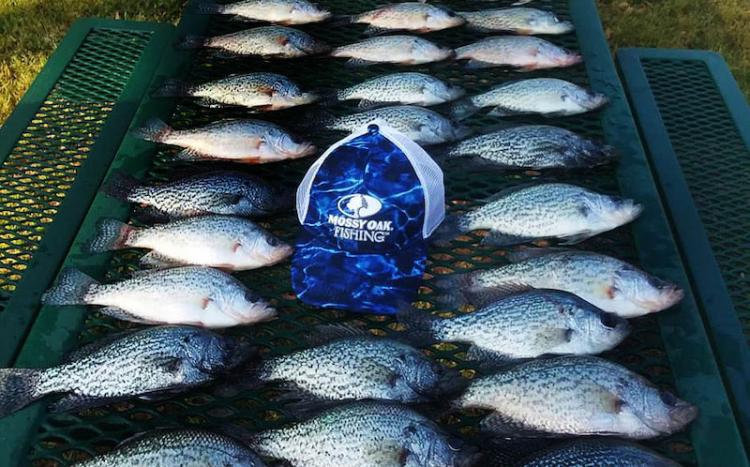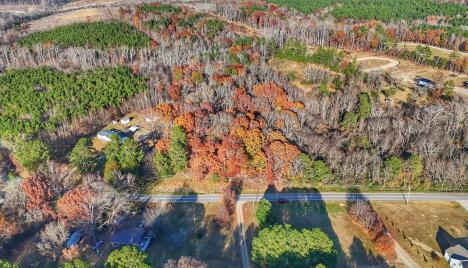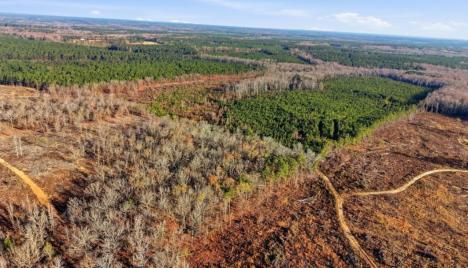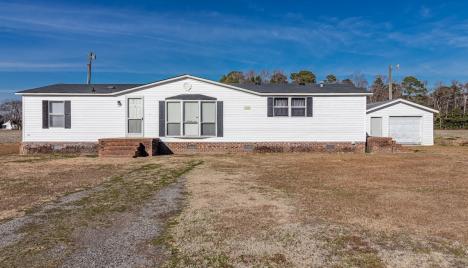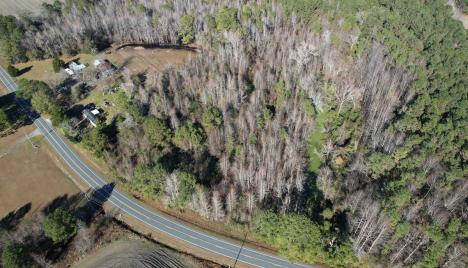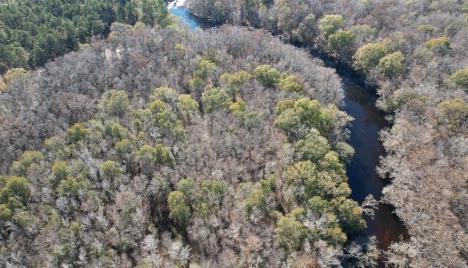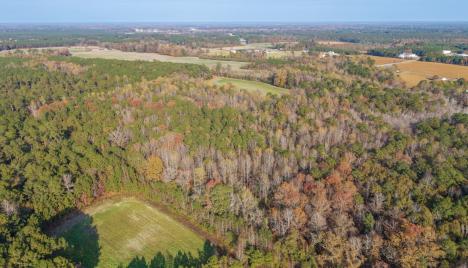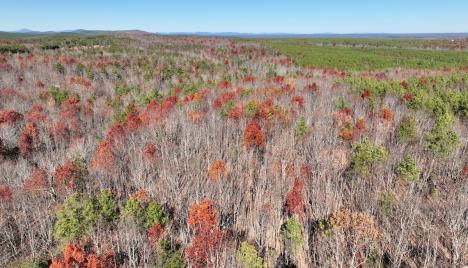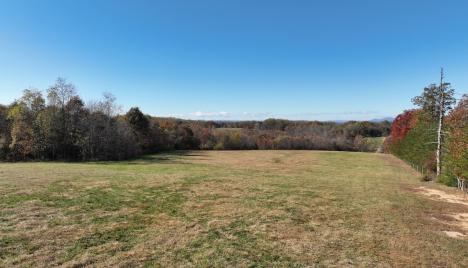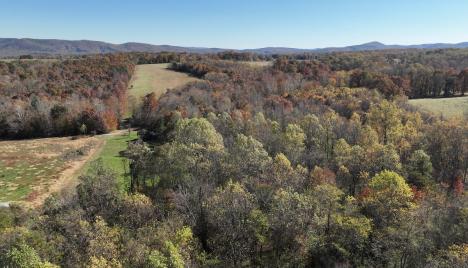I’m strictly a structure fisherman when I fish for crappie. I look for underwater trees and logs and places where the current has piled-up limbs, sticks and brush and find those spots on my Humminbird Helix 12 depth finder. The small dots on my screen are crappie. I can see where those crappie are holding, perhaps on the edge of an underwater creek channel where it runs into the main river channel. I’ll have the underwater trees where I’ve caught the most crappie tagged as waypoints.
I also build crappie-fishing reefs out of 5-gallon buckets. I cut river cane and put those canes in a bucket, leaving about 10-12 feet sticking out of and above the bucket. Then I mix up and pour concrete into each of the 5-gallon buckets. At the locations where I’ll put these artificial reefs, I’ll generally place three buckets in the same spot and about 25 in a general area, spread out about 3-5 feet apart. By building these buckets during the week, I can take the new buckets with me every time I go fishing and create a new reef. They’re easy to load and unload out of the boat, they stand up straight on the bottom, and I sink these buckets in 20 feet of water. This way, the cane stands up at 8-10 feet off the bottom, and that’s the depth where I catch most of my crappie all year long. I have 250-plus reefs placed in Lake Eufaula.
I try to create these cane reefs and brush shelters along the underwater river ledges and creek ledges and in the mouths of creeks. I sink these in various depths of water, so that I can fish them at different times of the year. However, we catch most of our crappie the most consistently during the summer months here at Eufaula when the crappie are holding in deep water and ganged-up on the artificial reefs I’ve created.
Generally my clients, friends and family vertical fish either minnows, jigs like those from Big Bite or small spoons around these brush shelters I’ve built. I’ll have three rod holders set up on the front of my boat and three on the back of the boat. Two of the rods are rigged for tight-line fishing, and one rod is rigged up with a slip bobber, but I don’t put the stopper in that slip bobber to hold the bait at a certain water depth. I let the line go through the bobber and use the bobber as a strike detector. If we’re fishing tight lines with live minnows, once a crappie takes a minnow, the bite may be so light that you can’t see it, if you have the stopper in the bobber. However, by not having the stopper in the bobber, then you can spot easily the line moving from one side to the other side of the bobber. That’s when you can set the hook and catch the crappie. I fish with one to two No. 4 size shot lead(s), depending on the wind, up the line, and a No. 6 wire crappie hook about 8-10 inches below the lead with 4-6-pound test line according to how thick the cover is where we’re fishing.
An important factor to remember when you’re looking for brush and crappie hot spots is to know where the transducer for your depth finder is located on your boat. Then you can position your boat properly to catch the crappie you see on your depth finder. On my boat, the transducer is on the back, right-hand side behind the driver’s seat. So, when I see structure or fish on my depth finder, I know that the crappie are just behind the boat. I’ll throw my buoy over my head toward the left side of my boat. That way the buoy lands away from the fish, and I know which side of the buoy to let our lines down to catch crappie.
Often each of my anglers will catch 50 or 60 crappie in a 2-4 hour trip. But we only keep the largest crappie we catch, and release the smaller ones.
-Tony Adams of Eufaula, Alabama, can produce a three-person limit of crappie on Lake Eufaula in less than 4 hours, and you can too by following his recommendations for crappie fishing on many crappie lakes across the country.


